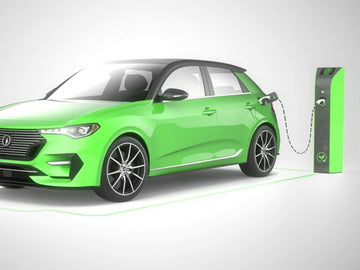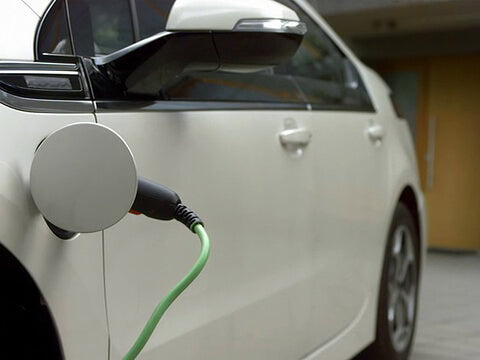
Stuck on the road with a dwindling EV battery? Public charging stations can be lifesavers, but how fast can you actually juice up your car? Figuring out a station's charging speed can sometimes feel like a mystery. Fear not, fellow EV driver! This guide will equip you with the knowledge to uncover the charging speed secrets of any public station. We'll explore various methods, from deciphering information displayed directly on the station itself to utilizing handy apps and online resources. No more guesswork – you'll be a charging speed sleuth in no time, ensuring efficient and informed charging stops on your electric adventures!
Information Displayed at the Charging Station:
Hitting the road in your electric vehicle (EV) can be exhilarating, but the fear of running out of juice before reaching a charging station can put a damper on the adventure. While public charging stations offer a convenient way to top up your battery, figuring out how fast you'll actually be charged can sometimes feel like a guessing game. This guide will empower you to unlock the charging speed secrets of any public station, ensuring efficient and informed charging stops.
Our first line of attack is the information displayed directly on the EV charger itself. Thankfully, many public charging stations are quite transparent about their charging capabilities.
- Looking for the Speed: Keep an eye out for a label or display that indicates the charging speed. This information might be presented in two ways:
- Kilowatts (kW): This is the most common format used to display charging speed. A higher kW rating signifies a faster charging experience. For example, a 50 kW charger will replenish your battery considerably quicker than a 7 kW charger.
- Less Commonly: Kilowatt-hours (kWh): While less frequent, some stations might display the charging speed in kWh. This represents the total energy delivered over time. However, kWh doesn't directly translate to charging speed because it depends on the charging duration. In these cases, it's best to look for additional information or consult other methods outlined in this guide to get a clearer picture of the actual charging speed.
By deciphering the information displayed on the EV charger itself, you can often determine the charging speed with a quick glance. In the next section, we'll explore how mobile apps associated with charging networks can provide even more detailed information about specific stations.
Using the Charging Station Network App
While information displayed directly on the EV charger itself is a great starting point, there's a wealth of additional details waiting to be discovered. Let's delve into the world of mobile apps offered by charging station networks.
- Convenience at Your Fingertips: Many charging station network providers have developed user-friendly mobile apps. These apps not only help you locate stations in your vicinity, but also offer a treasure trove of information about each station, including its charging speed.
- Beyond Speed: These apps typically go beyond simply displaying the charging speed in kW. They may also provide details like:
- Charger Type: Public charging stations come in various levels, with Level 2 EV chargers being the most common. Level 2 charger typically offers faster charging speeds than a standard home outlet (Level 1), but are not as powerful as DC fast chargers. The app will usually indicate the charger type available at the station.
- Real-time Availability: The app can be a lifesaver when you're on the go. It can show you which stations in your area are currently available, preventing you from wasting time driving to a station that's occupied.
- User Reviews and Ratings: Some apps allow users to leave reviews and ratings for specific stations. This can be helpful for gauging the overall functionality and user experience of a particular station.
- Not All Apps Are Created Equal: While many charging station networks offer apps, it's important to note that app functionality can vary.
- Network Specificity: Some apps are designed specifically for a particular charging network. If you frequent stations operated by a specific network, downloading their app is a wise move to access the most detailed and up-to-date information.
- Universal Apps: There are also some universal apps that aggregate information from various charging networks. These apps offer the convenience of finding all types of stations in one place, but the level of detail provided for each station might be less comprehensive compared to network-specific apps.
- The Takeaway: Mobile apps from charging station networks are powerful tools for EV drivers. They can not only reveal the charging speed of a specific station, but also provide valuable additional information to make informed charging decisions. In the next section, we'll explore online resources that can further enhance your public EV charging experience.
Online Resources for Public Charging Stations
Before hitting the road with an electric vehicle (EV), it's crucial to plan your route and ensure access to public charging stations along the way. Fortunately, several online resources provide valuable information about the location, availability, and features of public charging stations, making it easier for EV drivers to navigate their journeys.
Are there online databases or maps that list public charging stations?
Yes, several online databases and mapping services list public charging stations, helping EV drivers find convenient locations to recharge their vehicles. These resources include platforms like PlugShare, ChargePoint, and the Tesla destination charger network. These databases allow users to search for charging stations based on location, filter results by charger type or network, and view additional information such as station availability, pricing, and user ratings and reviews. Many of these platforms also offer mobile apps for on-the-go access to charging station information.
If so, do these resources typically include information about charging speed?
Online resources for public charging stations typically include information about charging speed, allowing EV drivers to choose stations that best suit their needs. Charging speed is an essential factor for minimizing charging time and maximizing travel efficiency, especially during long trips. Platforms like PlugShare and ChargePoint often provide details about the charging rate of each station, indicating whether it offers Level 1 (standard household outlet), Level 2 EV charger (faster charging), or Level 3 (DC fast charging) capabilities. Additionally, some platforms may include real-time data on charging speed and availability, allowing users to make informed decisions about where to charge their vehicles.
By utilizing these online resources, EV drivers can effectively plan their routes, locate nearby charging stations, and ensure a smooth and convenient charging experience. Whether it's a quick top-up during a shopping trip or a longer charging session on a road trip, access to comprehensive information about public charging stations is essential for maximizing the benefits of electric vehicle ownership.
Contacting the Charging Station Network Provider
When seeking detailed information about public charging stations, contacting the charging station network provider directly can be a valuable resource for electric vehicle (EV) drivers.
Is it possible to contact the charging station network provider directly for information?
Yes, it is often possible to contact the charging station network provider directly for information about their charging stations. Most charging station networks have customer support channels, including phone numbers, email addresses, and online contact forms, through which EV drivers can inquire about station details, availability, technical support, and any other related queries. Additionally, some network providers may offer dedicated customer service representatives who can assist with specific issues or provide guidance on using their charging infrastructure effectively.
What information (station ID, location) would be needed to inquire about charging speed?
When contacting the charging station network provider to inquire about charging speed or other station details, it's helpful to provide specific information to facilitate the process. Key details that may be needed include:
- Station ID: Each charging station within a network is typically assigned a unique identifier, such as a station ID or serial number. Providing this identifier allows the network provider to pinpoint the exact station you're inquiring about and access relevant information specific to that location.
- Location: In addition to the station ID, specifying the location of the charging station is essential for accurate assistance. This includes details such as the street address, city, state/province, and ZIP/postal code. Providing precise location information helps the network provider identify the correct station and ensures that you receive accurate information tailored to your needs.
By providing the station ID and location details when contacting the charging station network provider, EV drivers can streamline the inquiry process and receive timely and accurate information about charging speed, availability, and other relevant details. This direct communication channel offers a personalized approach to addressing specific questions or concerns, ultimately enhancing the overall charging experience for EV owners.
FAQs / People Also Ask
- Can I find the charging speed information directly on the charging station itself?
Yes, many public charging stations display their charging speed directly on the unit. Look for a label or display indicating kW (kilowatts) - a higher kW rating signifies a faster charging speed. Some stations might show kWh (kilowatt-hours), but this doesn't directly translate to charging speed.
- How can mobile apps help me find out the charging speed of a station?
Many charging station network providers offer user-friendly mobile apps. These apps not only help you locate stations but also provide details like charging speed in kW, charger type (e.g., Level 2), and real-time availability. Network-specific apps might offer the most comprehensive information.
- Are there online resources that list public charging stations and their charging speeds?
Absolutely! Numerous online databases and maps compile information on public charging stations, including location, charger type, and most importantly, charging speed in kW. These resources can provide a comprehensive overview of charging options in your area.
- Can I contact the charging station network provider for information?
Yes, contacting the charging station network provider directly is always an option. Have the station ID or location information handy to inquire about the specific charging speed.




